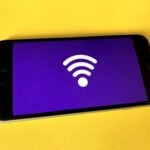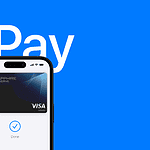After years of requests from users, it looks like WhatsApp is finally preparing to launch a dedicated iPad app. On May 26, 2025, the official WhatsApp account subtly stoked the flames of anticipation by replying with the 👀 emoji to a social media post suggesting the need for an iPad version of the app. While vague, this nod all but confirms what many suspected: Meta is on the cusp of delivering the long-awaited tablet experience.
A Native WhatsApp iPad App Has Been a Long Time Coming
Despite being one of the world’s most popular messaging apps—with over 2.7 billion users—WhatsApp has never had an official app for iPad. For years, users had to rely on clunky workarounds like WhatsApp Web in Safari, which offers limited functionality and no true native features like split-screen multitasking or offline message access.
This is finally changing.
Inside the iPad App: What We Know So Far
Since September 2023, Meta has been testing an iPad-specific version of WhatsApp through Apple’s TestFlight beta program. The app closely resembles the macOS and Windows desktop versions, featuring a dual-pane UI optimized for iPad’s larger display.
Key features include:
- Split View Support: Messaging on the left, chat details on the right.
- Linked Devices Support: You can connect your iPad to your primary WhatsApp account by scanning a QR code from your phone—no SIM card required.
- End-to-End Encryption: Just like on other platforms, your messages and calls remain secure and private.
Importantly, the iPad app works independently of your iPhone once linked, meaning your device doesn’t need to stay online for the iPad version to function.
Why Now?
The push for a tablet-friendly version of WhatsApp isn’t new, but Meta’s recent focus on multi-device support laid the groundwork. With the 2021 rollout of WhatsApp’s multi-device beta, users were finally able to use the app on multiple devices without relying on a phone connection. This made the technical foundation for a standalone iPad app feasible.
Furthermore, as Apple’s iPad increasingly positions itself as a laptop replacement with the M-series chips and productivity tools, the absence of WhatsApp—an essential communication tool—became more noticeable.
When Can You Download It?
As of now, Meta hasn’t announced an official public release date. However, the increasing social media teasers and the fact that the beta version has been in testing for well over a year suggest a launch could happen within the next few months.
If you’re eager to try it early, you’ll need an invite to the TestFlight beta—though slots are often limited.
A Better Alternative to WhatsApp Web
Until the app becomes available, iPad users can still use web.whatsapp.com in Safari and link their devices using the Linked Devices feature on their phone. This provides basic functionality—reading and replying to messages—but lacks full access to calls, media management, and push notifications.
Final Thoughts
The release of a native iPad app for WhatsApp will finally close a frustrating gap in the platform’s ecosystem. With tablet use continuing to rise in both personal and professional settings, this move not only enhances the user experience but solidifies WhatsApp’s position as a truly cross-platform messaging solution.
Stay tuned—as all signs point to a release just around the corner.
Recover Deleted WhatsApp Messages Without Backup
Recovering deleted WhatsApp messages without a backup can seem tricky, but a few effective methods can help. Whether by using specific software or built-in features, you can get back important conversations. These methods can recover your messages quickly and safely.
Software tools like MobileTrans and PhoneRescue can scan your device to find and recover deleted messages. They are user-friendly and can guide you step by step. This makes data recovery accessible even if you’re not tech-savvy.
Even without a backup, these tools and methods can assist in recovering WhatsApp messages. By following the easy instructions, anyone can retrieve deleted messages and avoid losing important data forever.
Recovering deleted WhatsApp messages without a backup can be challenging, but there are a few possibilities depending on your device (Android or iPhone) and how recently the messages were deleted.
Important Note: WhatsApp generally does not store your chat history on its servers. Messages are stored locally on your device or in your chosen cloud backup (Google Drive for Android, iCloud for iPhone). Therefore, if you don’t have a backup, direct recovery can be difficult.
Here’s a breakdown of methods:
1. For Android Users (Checking Local Backup):
Android phones often maintain a local backup of your WhatsApp chats, typically stored on your phone’s internal storage or SD card. WhatsApp usually saves up to the last seven days’ worth of local backups.
- How to check for a local backup:
- Open your File Manager app on your Android device.
- Navigate to
Internal StorageorSDcard(depending on where your WhatsApp data is stored). - Find the
WhatsAppfolder, then open theDatabasesfolder. - You’ll see files named something like
msgstore-YYYY-MM-DD.1.db.crypt12. These are your local backup files, with the date indicating when they were created.
- To restore from a local backup (if available and older than your current state):
- Uninstall WhatsApp from your phone.
- Go back to the
Databasesfolder using your File Manager. - Rename the backup file you want to restore from (e.g.,
msgstore-YYYY-MM-DD.1.db.crypt12) tomsgstore.db.crypt12. (Make sure you don’t change thecryptextension number). - Reinstall WhatsApp from the Google Play Store.
- During the setup process, WhatsApp should detect the local backup and prompt you to Restore your chat history. Tap “Restore” to retrieve your messages.
Important Considerations for Android Local Backup:
- This method only works if the deleted messages are present in an older local backup file that you haven’t overwritten with a newer, empty backup.
- If you’ve reinstalled WhatsApp multiple times without restoring, or if a new backup occurred, your previous local backups might have been replaced.
2. For iPhone Users (More Limited Options Without Backup):
iPhones do not maintain local WhatsApp backup databases in the same way Android does. If you don’t have an iCloud backup enabled, recovering deleted messages becomes much harder.
- Check iCloud Backup (if you had it enabled):
- Go to iPhone Settings > your name (Apple ID) > iCloud > Manage Account Storage > Backups.
- See if there’s a recent iCloud backup that includes WhatsApp data.
- If a relevant backup exists, you can try to restore it by uninstalling and reinstalling WhatsApp. During the setup, WhatsApp will ask if you want to restore from iCloud.
- Note: This will restore your entire iPhone to that backup point, which might mean losing other newer data on your phone.
3. Third-Party Data Recovery Software (for both Android and iPhone):
Several third-party data recovery tools claim to be able to recover deleted WhatsApp messages even without a prior backup. These tools often work by deeply scanning your device’s internal storage for recoverable data.
- How they generally work:
- Install the software on your computer.
- Connect your phone to the computer via a USB cable.
- Follow the software’s instructions to scan your device.
- If successful, the software will display recoverable data, including WhatsApp messages, and allow you to preview and select what you want to restore.
- Examples of such software (do your research before using, as effectiveness can vary):
- Tenorshare UltData WhatsApp Recovery
- iMyFone ChatsBack
- Dr.Fone
- EaseUS MobiSaver
Important Considerations for Third-Party Software:
- Success Rate Varies: The success rate depends heavily on how recently the messages were deleted and whether new data has overwritten the space where the deleted messages were stored. The less you use your phone after deletion, the higher the chance of recovery.
- Security and Privacy: Be cautious when choosing third-party software. Only download from reputable sources to avoid malware or privacy issues.
- Cost: Many of these tools are paid software.
- Rooting/Jailbreaking: Some tools might require your Android device to be rooted or your iPhone to be jailbroken, which can void your warranty and pose security risks. Look for tools that offer recovery without these actions first.
4. Ask the Sender/Recipient:
This is the simplest, albeit not always feasible, method. If you deleted messages in a conversation, the other person still has them on their device. You can ask them to send you screenshots or export the chat history.
In summary:
- Best chance (Android): Check for and restore from a local WhatsApp backup.
- Best chance (iPhone): Rely on an existing iCloud backup.
- Last resort: Third-party data recovery software, with caution.
- Easiest (if applicable): Ask the other participant in the chat.
To prevent this issue in the future, always ensure your WhatsApp chats are backed up regularly to Google Drive (Android) or iCloud (iPhone).
Key Takeaways
- Effective software can recover deleted WhatsApp messages without backup.
- The process is easy and doesn’t require technical skills.
- Tools like MobileTrans and PhoneRescue provide step-by-step assistance.
Understanding WhatsApp Message Storage and Deletion
WhatsApp messages are stored locally on devices and, depending on the OS, they may also be backed up to services like Google Drive or iCloud. The deletion process for messages varies slightly between Android and iOS devices.
WhatsApp’s Data Storage Architecture
WhatsApp stores data locally in a specific folder on your device. On Android devices, this is usually found in the internal storage under WhatsApp/Databases. This directory contains backup files of your chat history, including automatic backups created by WhatsApp. These files include messages and media files.
On iPhones, WhatsApp data is stored within the app itself. Backups can be optional but are often saved to iCloud if enabled. This helps in restoring messages if you switch devices.
The Deletion Process on WhatsApp
When you delete a message in WhatsApp, it is removed from your visible chat history. However, it isn’t immediately removed from the storage database. On Android, the message data remains in the msgstore.db.crypt files until overwritten by new data.
On iOS, deleted messages are still stored within the app’s database and remain there until the next backup overwrites them. This lag in data deletion offers a chance to recover deleted messages using recovery tools before they are permanently erased.
Differences Between Android and iOS Storage Solutions
Android users benefit from WhatsApp’s local database stores, making manual backups through local storage possible. These backups can be transferred to a computer or new device if needed. With Google Drive, Android users can also set up automatic backups, ensuring that even deleted messages get saved until the next backup replaces them.
iPhone users rely on iCloud for backups. This integration allows for automatic backups of messages and media files. If a message is deleted, the iCloud backup can be used to restore it, provided the backup was made before the message was deleted. Unlike Android, iOS does not support local backup files that users can access directly.
Recovering WhatsApp Messages Without Backup
Recovering deleted WhatsApp messages without a backup can be challenging but it’s possible with the right steps. This guide covers the initial steps for both Android and iOS users as well as using third-party tools and specific methods for Android.
Initial Steps for Recovery on Android and iOS
To start recovering messages without backup, connect your device to a computer using a USB cable. Ensure that both devices recognize each other.
Download and install a reliable recovery software. Once installed, open the program and select the recovery mode appropriate for your device. Follow the on-screen instructions to scan for deleted messages.
Check the preview of recovered messages including text messages, photos, and attachments. Ensure the right messages are identified before proceeding to restore them.
Using Third-Party Recovery Tools
There are several third-party recovery tools like DroidKit, MobileTrans, and UltData. These tools can help recover deleted WhatsApp messages.
First, you must install the recovery software on your computer. Then, connect your smartphone. Select the appropriate recovery mode depending on whether you use an iOS or Android device. Follow the on-screen steps to scan your device for deleted messages.
After scanning, preview the messages. Select which ones to restore. These tools often recover text messages, photos, videos, and other attachments.
Restoration without Backup on Android
For Android users, you can also recover messages from the phone’s internal database. Use a file manager app to navigate to the WhatsApp database folder. Here you often find it under sdcard/WhatsApp/Databases or internal storage/WhatsApp/Databases.
Locate the backup file which typically has a format like msgstore-YYYY-MM-DD.1.db.crypt14. Rename this file to msgstore.db.crypt14.
Next, uninstall and reinstall WhatsApp on your phone. During the setup process, WhatsApp will prompt you to restore messages from the backup. Confirm and wait for the process to complete. This method works if there is a recent local backup stored on your device.







